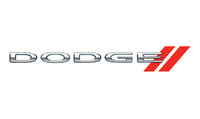If you have a car made in the past 10 years, computers now monitor the air pressure in your car’s tires for safety and better fuel efficiency. This introduced new issues that owners of older cars didn’t have to worry about. Tire pressure monitor systems (TPMS) are useful, but they introduced one more thing that you have to worry about then buying tires or fixing a flat
How the System Works
There are two different ways for a modern car to detect if a tire is low on air. The direct method involves a small battery powered pressure sensor inside the wheel, which sends out periodic radio signals when the car is moving, informing the car's computer of the air pressure. The indirect method works with the car's ABS and stability control sensors to read the speed of each wheel, and report when one is consistently faster, meaning it is low on air.
The TPMS pressure sensor inside the wheel is typically built into the valve stem. Radio receivers near each wheel pick up the signal and tells it when a tire is low, and which tire it is. Some systems will even tell you the exact tire pressure of each tire right on the dashboard. The cheaper indirect systems can't do this.
The indirect systems are also much more prone to false alarms, which can be caused by something as simple as irregularities in the road, or worn shocks.
Whenever the TPMS warning light comes on you should check all of your tires (the spare too, as some systems monitor that as well) at your next stop. If you do have a slow leak, the TPMS may just give you enough warning to get home or to a tire shop.

Keeping the TPMS Functioning
If your vehicle has TPMS, and every new car and truck sold in America after 2007 was required to, you should take precautions to keep it functioning properly.
The indirect system is fine as long as your tires are all the same size and close to the same amount of tread depth. Fitting one new tire to a car with three worn tires might be enough to set it off. Different brands and models of tires can vary in diameter even if they have the same size markings, so mixing and matching can give you false alarms too.
If you have the more complex system with in wheel sensors and transmitters:
- Avoid aerosol flat tire repair sprays, even brands that say they are safe for use with TPMS sensors. The glue can and will gum things up and may stop them from working.
- Always use the nickel plated valve stem inserts, never raw brass ones. Brass will react with the aluminum stem, and in time become impossible to remove.
- Always use a new rubber seal between the sensor and wheel to prevent leaks.
- Avoid over-torquing the valve stem nut or you may break the stem and render the sensor unusable.
Even when cared for properly, TPMS sensor batteries don’t last forever and aren’t replaceable. They were designed to last at least 5 years, approximately as long as a set of tires, because changing them requires mounting and balancing the tire. While the TPMS sensors were originally close to the price of a cheap tire, they have come down substantially. Now if you need to replace one, aftermarket models start as low as $25.
How to Check Your Tire Pressure
This clip is just a sample of checking the air pressure in the tires of a typical car or truck, but your Haynes manual will have more specific instructions if needed.
- Locate manufacturer suggested tire pressure on door sticker, in owners manual, or in your Haynes manual.
- Remove tire valve stem cap.
- Press gauge end to valve stem to read pressure.
- Add air if needed, or use gauge to release excess air pressure.
- Replace valve stem cap.
- Repeat for other 3 wheels.
- Don't forget to check spare tire occasionally as well.
What Is the Correct Tire Pressure?
Every car, truck, and SUV is different, but there is typically a factory recommendation on a sticker on the door jam of the drivers door, or in the glove compartment. However, many times there are different recommendations for different conditions, for instance, carrying four or more passengers vs. two, or driving a truck empty vs. loaded.
Tire pressures are always checked when the tires are cold, or after driving less than a mile, because air expands as it gets warm. If you can't find the factory suggested inflation, most light duty vehicles should be inflated to somewhere between 25 and 35 psi. Generally, the heavier the vehicle, the higher the tire pressure should be.
Remember, every tire gauge is different, and most aren't particularly accurate. It is more important that the tires on your car are correct compared to each other, than scientifically proven to be at exactly 31.5 psi.

TPMS Relearning
The simpler TPMS alerts just give you a warning light when the pressure drops 25% below the set level. On these cars, typically lower cost models, you have to manually check all 4 tires to see which one is low. That may seem like a hassle, but it makes other maintenance tasks easier, like tire rotations.
On the more advanced systems, the computer will tell you exactly what the tire pressure is in each wheel and warn which tire it is when one goes down. The negative of these systems is that when you rotate the tires the system needs to relearn which one is where. These systems also need to relearn when sensors are replaced, or new wheels are fitted.
These days most tires shops know the ins and outs of linking the TPMS with the sensors, and typically will do it with a tire rotation or replacement. Of course, your dealer will be happy to do it as well, but it will cost more.
Some cars, most notably GM and Ford products, don’t require anything more than a little knowledge and the key fob (for GM vehicles) to reset the system. On many Fords, turn the ignition to "on" (or press the start button without stepping on the brake), then press the hazard light button quickly 6 times. On most GM cars and trucks, turn the key to the "on" position, and press the lock and unlock buttons on the fob at the same time.
From there both are similar. The Ford will indicate on the dashboard, and the GM will light a turn signal bulb, to show which corner to start with. Let air out of the tire in that position until the horn toots, then move to the next indicated tire. When all 4 are done, the horn will beep twice. Of course, now you have to reinflate the tires to the recommended level.


























